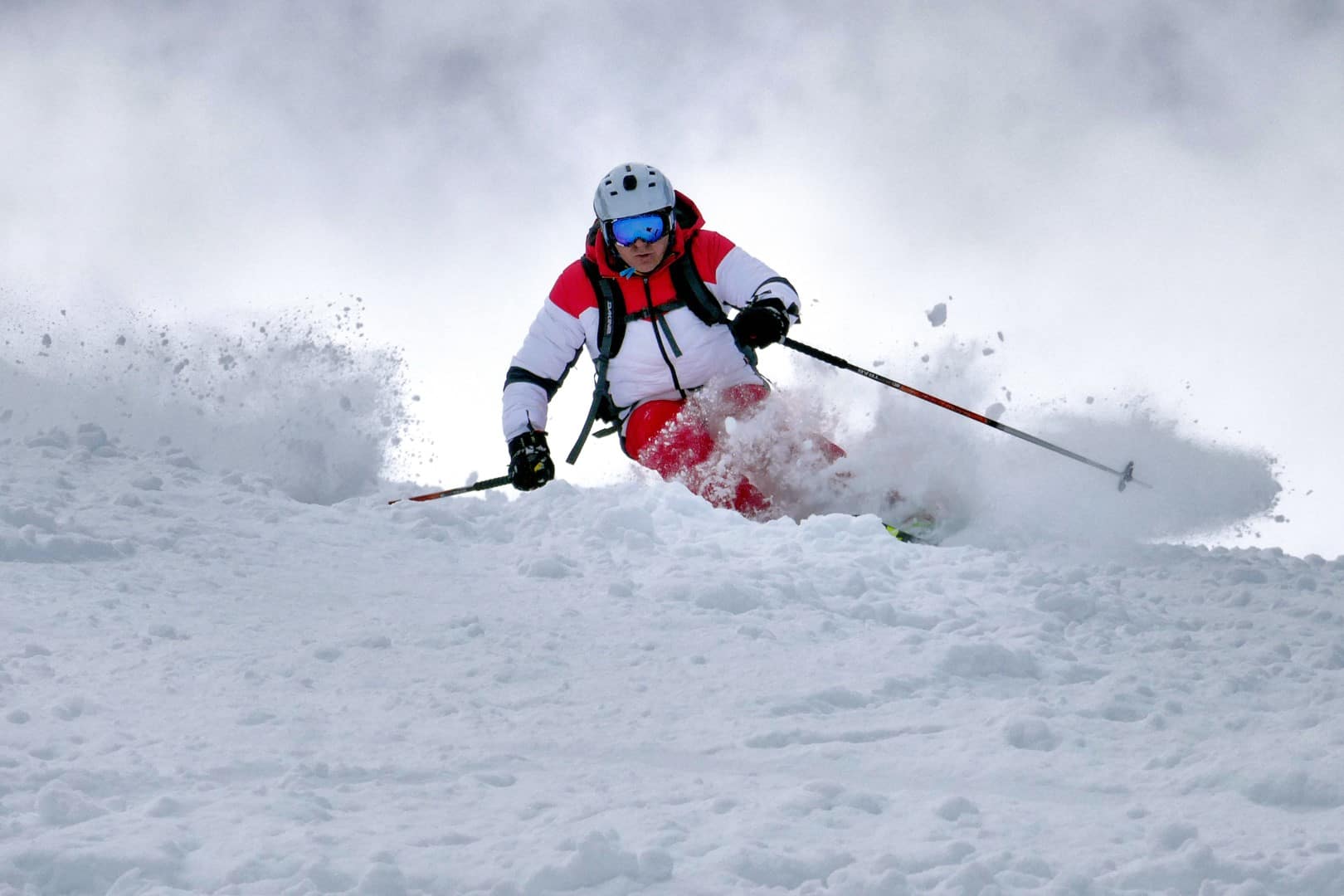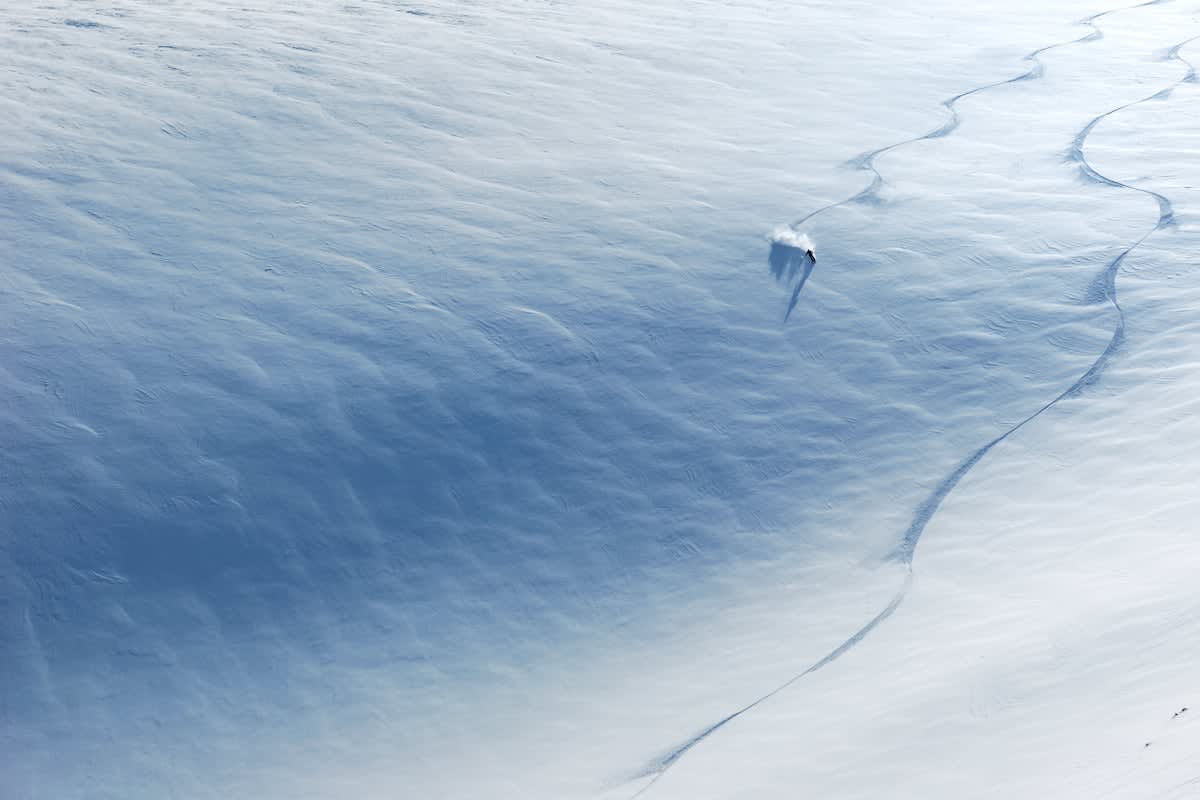Off-Piste skiing: Technique & how-to guide

Backcountry skiing aka freeriding – whatever you call it, both tribes will agree, it ROCKS.
An amazing winter sport when the weather is right, powder chasers live for the thrill of off-piste riding – far from the hustle and bustle of the ski resort! Fellow snow drifters that can’t get enough of the white stuff, we’ve put together some of the essential info you’ll need to safely and securely start off-piste skiing. Learn how to survey the snowfall, read the mountain and avoid avalanches with our pro freeride tips.

Off-Piste Technique
Forget what your granddad taught you, deep snow demands a completely different technique from the groomed pistes you learned on. Distributing your weight evenly on both skis, leave more room between each foot and relax your stance to allow for light and smooth arc turns.
Check out the Freeride World Tour for inspo.
DOs & DON’Ts
Don’t
– Head off-piste on your own
-Ride in someone else’s tracks (i) it’s harder (ii) it’s annoying (iii) it’s cheating
-Ride across someone else’s tracks (i) it doesn’t look good (iii) it’s really annoying
– Don’t ski hard and fast – you don’t want to risk an avalanche!
Do
– Kit up with a shovel, probe and antenna (ARVA)
– Choose skis/snowboards with a larger surface area
-Follow the weather report & avalanche rating
– Invest in a good helmet
-Work on your balance and perfect your power transfers
-Learn how to speed up
We recommend riding with an alpine guide!
Skiing off-piste can seem like the perfect adventure, but heading out into the powder without an experienced alpine guide can be dangerous.
For first-timers check out our advice:
Beginners:
– Head out with a guide
– Make sure they’re accredited by the UIAGM, the International Federation of Mountain Guides that includes (SNGM) France, (Bergfuehrer) Austria, (BMG) U.K, (Guide Alpine) Italy, (New Zealand Mountain Guide Association) New Zealand. At Manawa, we only work with certified guides from one of these associations.
– Understand and learn about the weather – good conditions and snowfall will affect your excursion
– Listen, learn and react to the advice given by your guide
– Learn how to spot and avoid risks
– Stay alert and keep your eyes peeled for changes!
Experienced :
Check your equipment
Get avalanche training
Practise how to use your kit – bury a friend and use the Arva to find them
Get mountain training to understand how to evaluate snow stability
If you’re new to the location or missing any of the above – hire a mountain guide
The terrain
The perfect terrain is a matter of personal taste. If you’re looking for steep inclines you’ll want a different environment to someone taking their first steps off-piste.
The ideal off-piste terrain consists of multiple combinations that include valleys, couloirs, steep inclines and powder banks – the most popular in Europe is La Grave, a 100% off-piste resort in La Meije in Écrins National Park in France. The Vallée Blanche between in 2 Alps is suited to most backcountry skiers whilst Val Thornes, Chamonix, Serre Chevalier, Tignes and Val d’Isère are all well-known for their backcountry routes. But, if burning through the backcountry doesn’t get you excited, why not try heliskiing in Verbier and Zermatt in Switzerland, Sankt-Anton / Llech in Austria, and Gressoney or Alagna in Italy.
And, if a couple of feet of powder just isn’t enough, head out to Japan’s Hokkaido island for serious waist-deep POW and moderate inclines suited to most confident skiers. You don’t need to nail a clean 55° or back flip off cliff edges to try off-piste skiing in Japan – but for those in search of serious winter conditions, head to Rusutsu, Furano and Niseko.
Can’t decide where to go? Try a winning combo of great snow, infinite off-piste terrain and heliskiing in places like Canada’s Revelstoke, Vétérans or Valemount ski resorts or even Alaska’s Valdes or Alyeska.
Conditions
ARVA packs are essential and Airbags are highly recommended when heading off-piste. You should also consult the avalanche risk rating – looking out for snowfall and wind velocity. Even if you do your homework, we still advise riding with a guide to reduce risk and make sure you get the most out of your excursion!
Prices are organised in groups which makes it a great day out for you and your mates when you share the cost.
Photos : Johnny Collinson
Top Photo Credit: Mauro Paillex